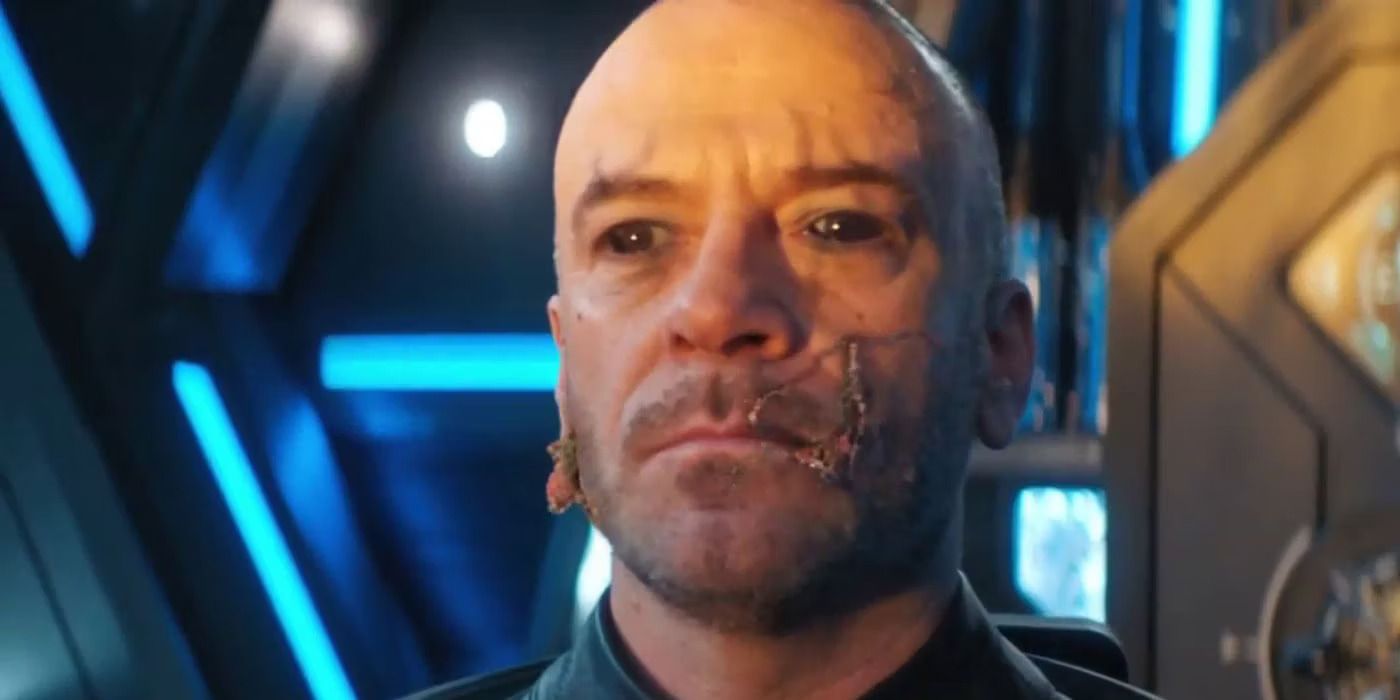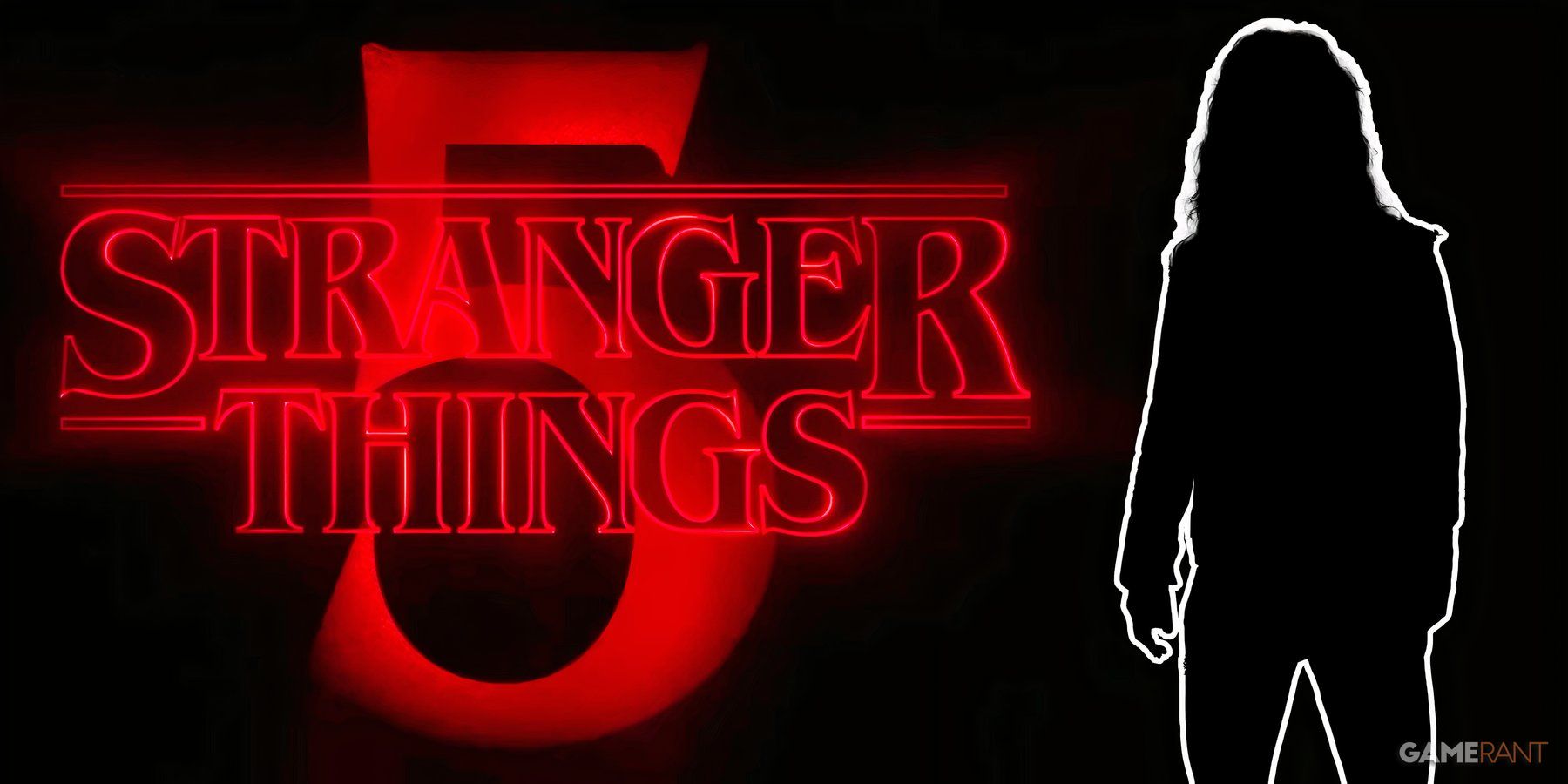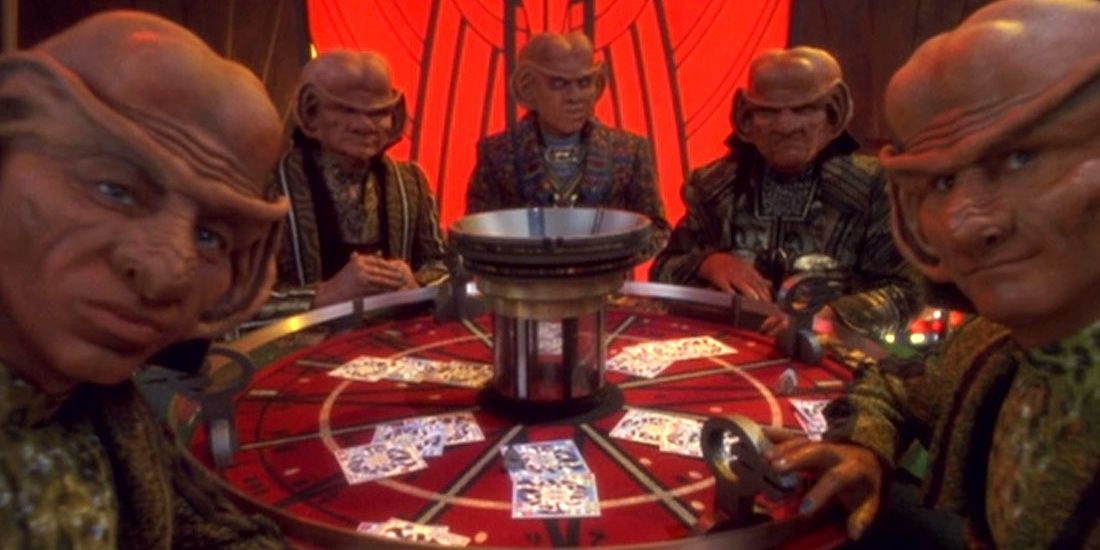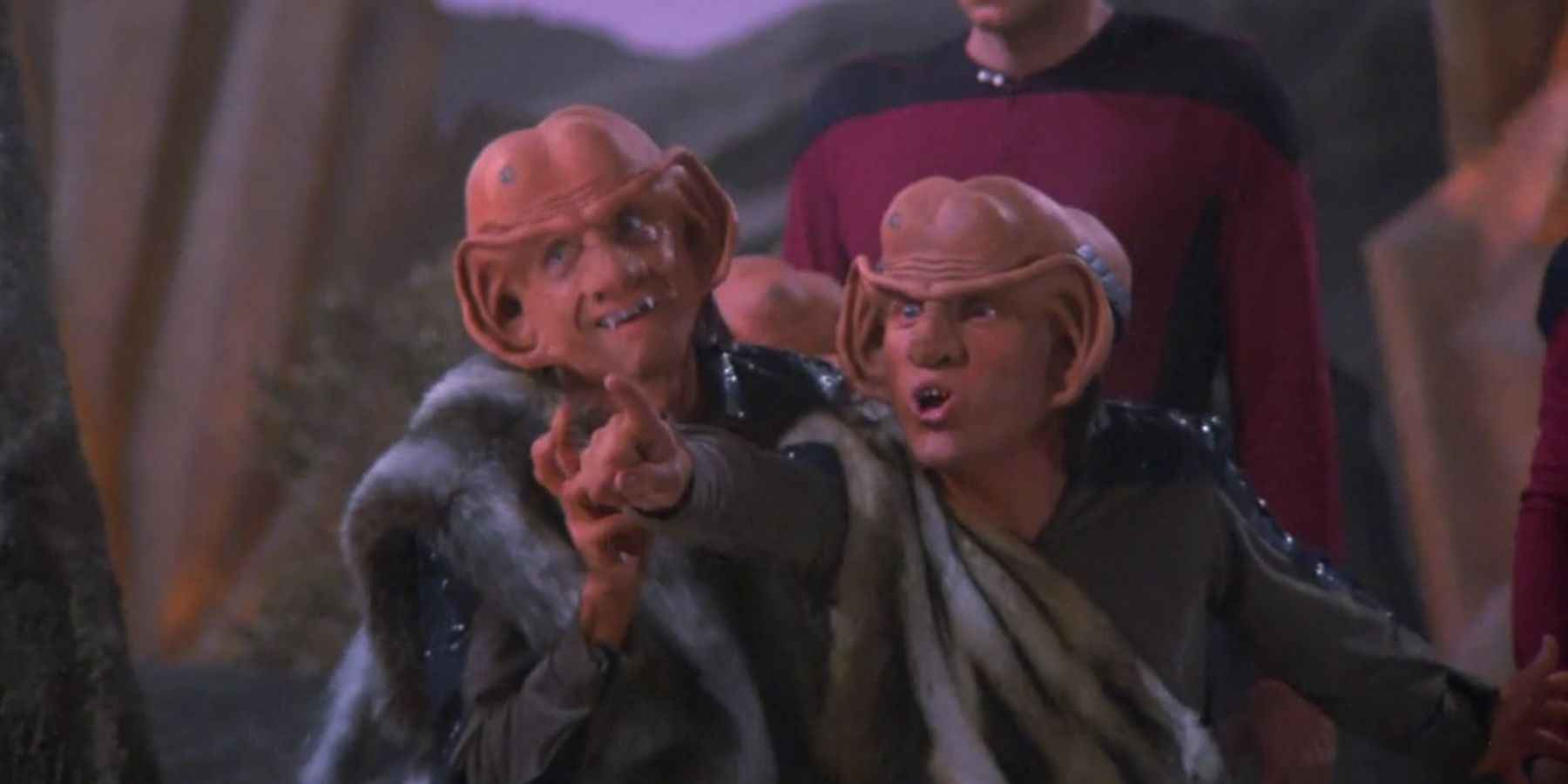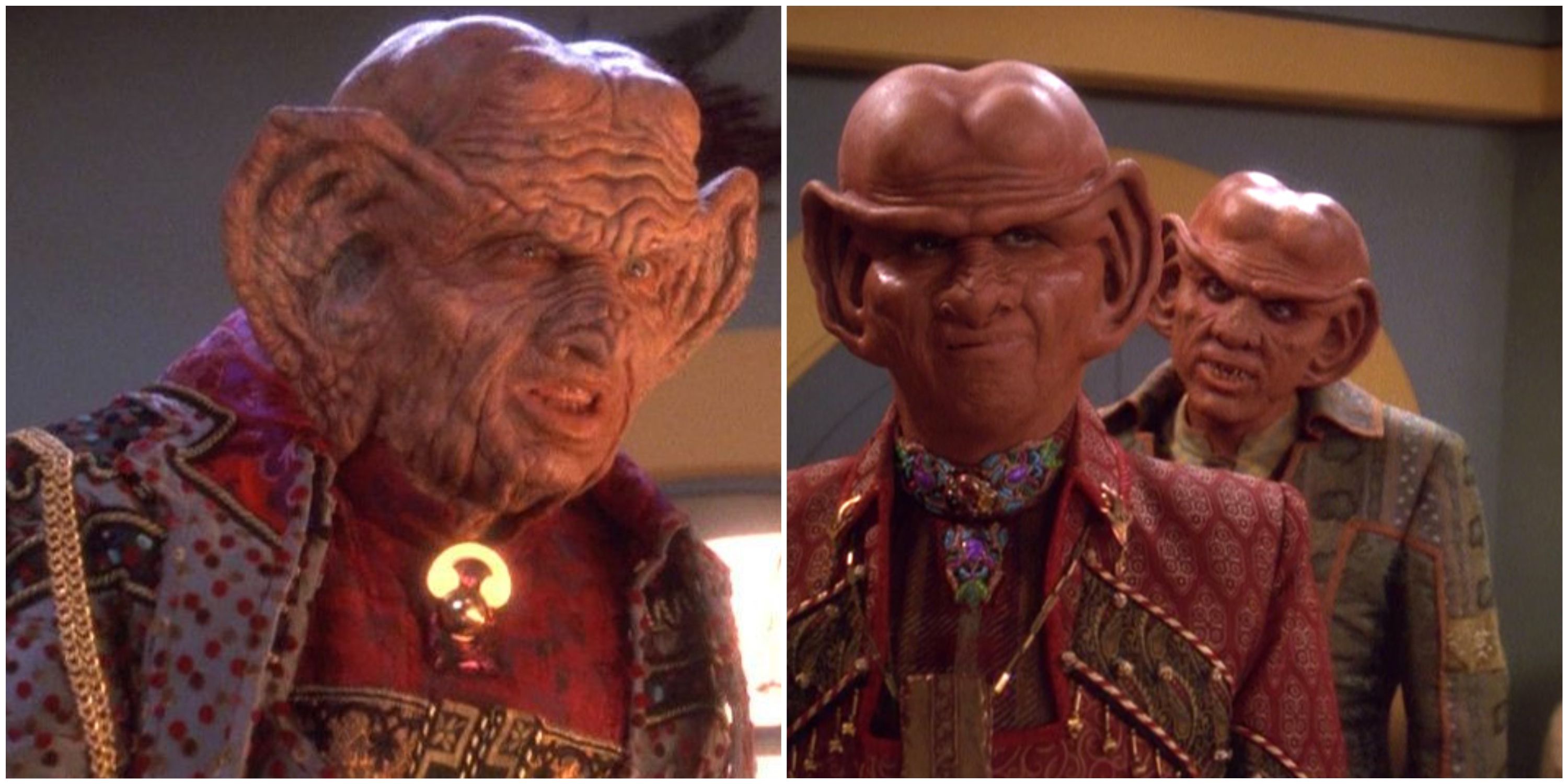The Ferengi were initially introduced as menacing marauders, only to almost immediately be re-invented when they failed to carry the Star Trek mantle of iconic villains. Creator Gene Roddenberry is no stranger to creating fantastical new species. The work he did to establish beings like the Vulcans and the Talosians inspired others such as Trill, Kelpiens, and many more. It’s because of him that Trekkies all over the world have a wide variety of options when considering what species they want to channel when participating in costume play (cosplay) or live-action role-play (LARP).
Any fans portraying the earliest iteration of the Ferengi would cover themselves in fur coats and arm themselves with sophisticated weaponry. They would flash their jagged teeth and engage in serious warfare against anyone portraying Federation officers. This reflects the Ferengi of The Next Generation, who were much more serious even when involved in hilarious situations; for example, when the main characters are turned into children who use Home Alone-esque trickery to stop the Ferengi from stealing the Enterprise. Initially, Roddenberry and noted director Herbert Wright meant for the Ferengi to be major villains, making Starfleet characters quake in fear whenever their paths crossed.
However, once in action, Star Trek creators found that the Ferengi didn’t come off as particularly threatening – certainly not enough to make fans fear for the safety of their favorite characters. They were later replaced by species like the Klingons and the Borg, who were much more capable of striking fear into the hearts of those unfortunate enough to be considered their enemies. That’s why fans looking to portray a later iteration of the Ferengi would don the now-iconic high-waisted pants with a flamboyantly-colored vest and dress shirt. Their sharp-toothed grins would be filled less with malice and more with the intention of scheming their way into some poor, unsuspecting person’s pockets.
This latter interpretation reflects the Ferengi of Deep Space Nine, who were a much more lighthearted bunch even when participating in morally dubious activities. This could refer to any episode in which Quark (Armin Shimerman) thinks up his latest ruse to get around Security Officer Odo (René Auberjonois) and conduct all manner of business – including the time he dabbled in dealing weapons.
Ironically, this change provided the Ferengi with more screen time throughout Star Trek projects. They were only featured in about fifteen episodes of The Next Generation. As characters meant to be scary villains, it makes sense that their appearances were limited, to inspire shock and fear whenever they did show up. Meanwhile, Ferengi characters like Quark, Rom (Max Grodénchik), and Nog (Aron Eisenberg) were staples in the ensemble cast of Deep Space Nine. They even got to evolve along with their peers. While Quark had a tendency to end up in ridiculous situations, his core beliefs were often tested, and it changed him over time. In season 4, Rom starts a union to fight back against the unfair treatment of employees by his boss and brother, Quark. Rom’s son, Nog, ends up joining Starfleet as one of the first Ferengi officers. Situations change them as they bring out complex aspects of major Ferengi characters, and it’s the change in how they’re written that makes this possible.
Yet, the more things change in Star Trek, the more they stay the same. The dedication of the Ferengi to pursuing profits has always been a staple of their characterization and the larger society that governs their way of life. They’ll lie, steal, and cheat to gain gold-pressed latinum, just as long as they adhere to the 431 Rules of Acquisition. In this way, the Ferengi can still carry a level of menace.
For example, in Deep Space Nine season 5, episode 18, “Business As Usual,” Quark comes close to getting removed from the station after he engages in shady dealings to gain personal wealth. He’s convinced to become a willing benefactor of war profiteering by his cousin Gaila (Josh Pais), who’s more than willing to let the world burn as he pads his pockets with increasing amounts of latinum. Quark’s newly-developed moral compass wins in the end, and he sells out his business partners after concluding that they’re not worth his soul or the loss of the friendships he’s made on Deep Space Nine. His storyline reminds fans that just because the Ferengi have been metaphorically defanged doesn’t mean they lack a strong bite.
At the end of the day, the writers of Star Trek changed the Ferengi because they weren’t believable villains. Their giant ear lobes, sharp teeth, and eccentric outfits weren’t so much scary as they were confusing and a little off-putting. In that regard, they worked best as comedic relief characters. And that’s how they operated, even when played more seriously by the actors bringing them to the small screen. Deep Space Nine made the most of them, but Star Trek as a whole has allowed them to fill many shoes. The Ferengi could be serious or silly, villains or allies, and even Starfleet officers.
The Ferengi may not have been believable as the bad guys, but they’ve always brought a smile to the faces of viewers. From Rom’s anxious twittering to Wallace Shawn hamming it up as the Grand Nagus, the Ferengi have done much good in the role of comedic relief. With the increasingly heavy stories being told in Star Trek, being able to laugh at a Ferengi’s failed get-rich-quick schemes feels more important than making them scary.

